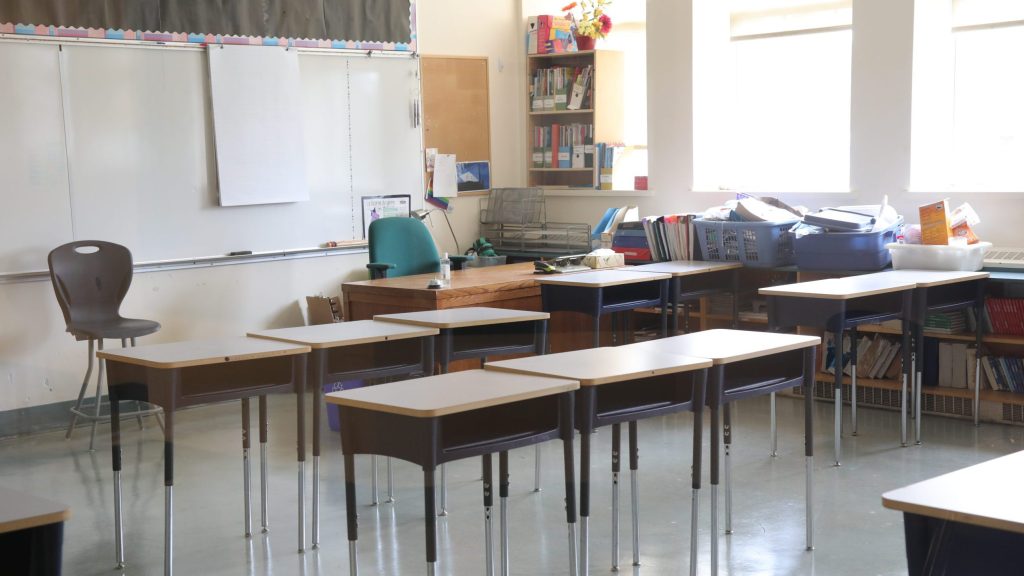B.C. brings in gas and travel restrictions after catastrophic flooding
Posted November 19, 2021 3:47 pm.
Last Updated November 20, 2021 9:26 am.
The emergency situation in B.C. due to flooding has reached a level where there is now a reduced supply of gas to the region. The province has introduced gas and travel restrictions.
The measures were announced and took effect Friday, in the wake of the devastating floods in parts of B.C. that has led to mudslides, evacuations, the loss of livestock and crops, and at least one person’s death.
People in southwest B.C., on Vancouver Island, and on the Sunshine Coast are limited to 30 litres per visit to the gas station. Emergency and essential vehicles will have unrestricted access to fuel. (scroll down to see full list of vehicles exempt from fuel restriction)
The measure will be in effect for 10 to 11 days.
“There will be temporary shortages but we are taking this important step to maintain our supply of gasoline. Under the order, gas stations will be required to ensure their gasoline reserves last until Dec. 1,” said Public Safety Minister Mike Farnworth.
‘If we’re greedy, we will fail’
When asked what will prevent people from buying more than 30 litres at a gas station, Farnworth said it will be based on an honour system.
“The majority of British Columbians in this province are going to do the right thing. If they know that 30 litres is what’s going to help keep our our emergency vehicles running, that keeps our supply chains open, that [ensures] that the all the goods and services that people are relying on operating over the next 10 to 11 days, they’re going to do the right thing.”
There won’t be police officers monitoring people as they fuel their tanks.
“This is not about enforcement. You can’t have a police officer at every gas station. What you can have are good hard-working people in this province doing the right thing over the next 10 to 11 days,” Farnworth said.
Though admits there will be some who will break the rules.
“Yes, there will. But the overwhelming majority people will do the right thing. That’s how we got through the last 20 months. And it’s how we’re going to get to the next 10 to 11 days … We have to pull together as a province, particularly here in the Lower Mainland. If we do that, we will succeed. If we’re greedy, we will fail. It’s that simple.”
Q: Are we running out of gas?
Farnworth: The measures were putting in place today are to ensure that there is a supply of gas that is available to everyone to ensure that we've got the ability to maintain a supply chains and the critical services that we need. #BCFloods— Lasia Kretzel (@rhymeswpretzel) November 19, 2021
Farnworth would not say how close B.C. is to running out of gas, but said, “If we follow the orders are in place today, we will be fine.”
The minister warns there will be delays at gas stations.
“Please be patient to help ease the impacts from these restrictions and keep people moving,” he said. “We’re asking people to use public transit in impacted regions whenever possible. Carpool, share with a friend, walk. Use alternative methods.”
“If you only need a quarter tank, leave the rest for the person behind you. If you can work from home, please do so.”
Farnworth says the province is working with the federal government to get more fuel into B.C., adding “this includes bringing more fuel by truck and barge from Alberta, Washington state, Oregon, and as far away as California.”
The order does not include natural gas or heating oil used to heat homes.
Vehicles exempt from gas restrictions:
- Emergency service vehicles (fire, police, ambulance and health care including urgent medical treatment)
- Public transit vehicles
- Commercial transport trucks – critical goods and services (food and beverage, health care, safety)
- Refrigerated trucks
- Potable water delivery/wastewater service
- Grocery delivery
- Road repair, maintenance and recovery vehicles/tow trucks
- Military vehicles
- Critical infrastructure, construction and repair vehicles
- Home-care workers
- Municipal services vehicles
- First Nations government services vehicles
- BC Ferries/Coast Guard/tugboats/marine emergency/pilot boats
- Canada Post and other couriers/package delivery vehicles
- Vehicles for the provision of critical government services
- Airport authority vehicles and air travel
- Waste disposal/recycling
- BC Hydro, Fortis and other heavy-duty and light-duty utility vehicles
- Telecommunication repair and installation vehicles
- Fuel delivery trucks and boats
- School buses
- Taxis
- Agricultural and farm-use vehicles, including vehicles supporting flood response
- Veterinarians supporting flood response
- Inter-city buses
Travel restrictions
Non-essential travel is now prohibited along the most severely affected B.C. highways.
“This applies to the hardest-hit sections of Highway 99, Highway 3, and Highway 7,” Farnworth said.
Farnworth to British Columbians:
"If you don't have to be on the, on the road, don't travel. If you only need a quarter tank, leave the rest for the person behind you, if you can work from home, please do so."#BCFloods— Lasia Kretzel (@rhymeswpretzel) November 19, 2021
Non-essential travel is not allowed on:
- Highway 99: from the junction of Highway 99 and Lillooet River Road to the BC Hydro Seton Lake Campsite access in Lillooet. Only passenger vehicles and commercial vehicles up to 14,500 kilograms will be permitted.
- Highway 3: from the junction of Highway 5 and Highway 3 in Hope to the west entrance to Princeton from Highway 3.
- Highway 7: from the junction of Highway 7 and Highway 9 in Agassiz to the junction of Highway 7 and Highway 1 in Hope.
Farnworth says there will be police on the roads, enforcing the travel restrictions.
“It’ll be done in the form of either roving patrols such as Highway Patrol … but also road checks will be in place and the public can expect to see that.”
People caught violating the travel restrictions face a $2,000 fine, which Farnworth says, “sends a pretty strong warning.”
Re: enforcing travel restrictions: There will be police presence at choke points. Roving patrols such as the Highway Patrol and road checks.
And there will be fines up to $2,0000#BCFloods— Lasia Kretzel (@rhymeswpretzel) November 19, 2021
“As roads are repaired and the backlog of essential traffic clears, restrictions on essential travel can and will be eased,” Farnworth promised.
The following essential vehicles are exempt from the travel restrictions:
- commercially transporting goods
- transporting essential goods and supplies, specifically:
- food, water and other beverages
- fuel and gasoline
- health-care goods, pharmaceuticals and medical supplies
- personal hygiene, sanitation and cleaning goods.
- transporting livestock, agricultural or seafood products and supplies
- livestock producers returning to a farm to provide care for animals
- responding to emergencies, including search and rescue operations
- evacuations for medical reasons and urgent medical treatment
- highway repair and maintenance
- transporting essential personnel
- returning to a person’s own principal residence
- exercising an Aboriginal or treaty right as recognized and affirmed by Section 35 of the Constitution Act, 1982.
Farnworth says these orders will help keep commercial traffic moving, stabilize supply chains, and ensure people get home safely.
An evacuation order was issued for the entire city of Merritt due to catastrophic flooding. Hundreds more people have been forced from their homes in the Sumas Prairie area of Abbotsford.
The flooding has affected 25,000 hectares of farmland, 15,000 hectares of which is part of the Agricultural Land Reserve.
There are 959 farms under an evacuation order and 164 on alert.
Related video: Farmers rescue cattle from flooding in Abbotsford
CityNews heard from one poultry farmer in Abbotsford who is left at a loss, both emotionally and financially, after he was forced to abandon tens of thousands of chickens to die in the flood waters.
On Tuesday morning, after days of heavy rain, Sumas Prairie was ordered to evacuate. More than 1,000 people were told to make for safer ground. Officials told farmers to leave their animals behind, as there was no way of rescuing the thousands of cows, horses, and chickens.
Shortly after, there were reports of dead cows floating in the flood waters and many worried about the chance of survival for other animals left behind.
With files from Claire Fenton and Tim James










